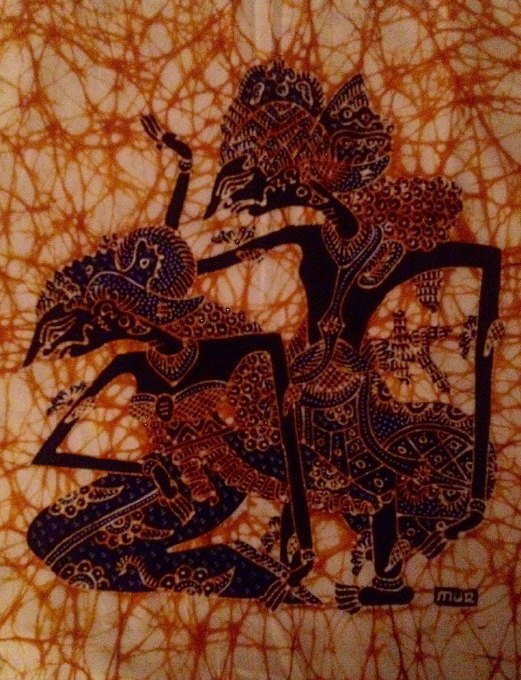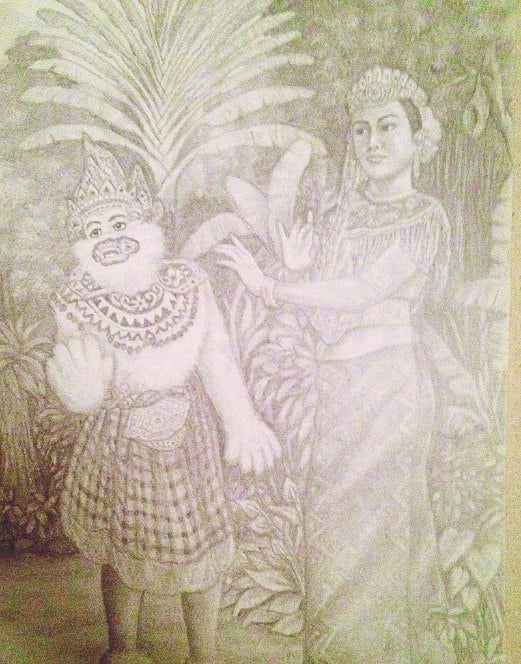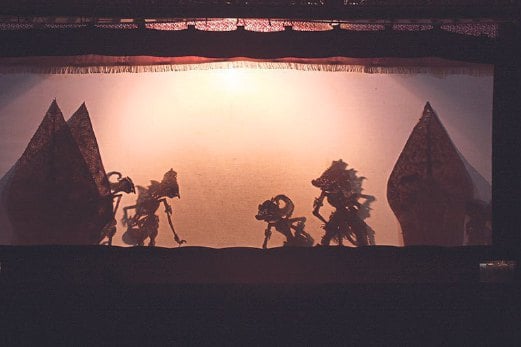This Deepavali, ninotaziz traces the influence of Ramayana on ancient storytelling throughout the Nusantara
AGAINST the backdrop of the dramatic Candi Prambananin Jogjakarta, a world-famous al fresco performance is one of the main attractions on the island of Java. Weather permitting, under the night sky, 200 dancers bring the Ramayana Ballet to life, the story of Rama and Sinta as depicted on the walls of the temples perhaps a millennia ago.
The two-hour evening performance of the Javanese-styled culture and music recounts the legendary story, opening with the evil Rahwana kidnapping Rama’s true love, Sinta. The gentle great bird, Jatayu, tries to save Sinta but is defeated. Yet, not all is lost for he finds Rama and tells him that his lady beloved has been kidnapped by Rahwana.
After many trials, fierce fighting ensues and finally, Rahwana and Rama meet in battle where Rahwana is defeated and killed. All seems well until Rama asks Sinta to prove her purity by walking into a bath of fire. Sinta survives the trial, and Rama and Sinta then return to their kingdom to rule and live happily ever after.
This in essence is the Ramayana story, India’s most beloved and enduring legend, in a nutshell as can be traced throughout Asia. In fact, Ramayana-inspired storytelling is more common than we think. The evil of Ravana is retold in the wayang kulit Maharaja Wana or Hikayat Seri Rama to great effect and forms the basis of many branches of wayang kulit stories. The journey of the good king Rama and the virtuous Sita is also the background of the Ramakien in Thailand.
Hanuman makes his appearance in theatrical performances like the Makyung Raja Bongsu Sakti as Amir Putih Raja Kera. And in Chinese mega movies, the appearance of the Monkey King always entertains.
FROM THE POET VALMIKI
The Hindu sage Valmiki’s poem and story of Rama and Sita in Sanskrit begins in Ayodhya, India. Kosala, the beautiful and peaceful capital city, was a model of an ancient cosmopolitan. The Sarayu river flowed languidly as the people went around their daily lives. Their king, Dasaratha, whose statue stood guard in every corner of the city, smiled benevolently.
Dasaratha, however, was not smiling in his palace for he had no heir. But eventually, thanks to his constant prayers, his wish was granted. The legendary Rama was born to his first Queen, Kausalya. Bharat was born to his second wife, Kaikeyi, who had once saved the king from a tiger and was given two wishes for her asking. The king also had twins Lakshmana and Sarushna, sons of Sumitra, his youngest wife.
Rama, being the eldest, was proclaimed the next in line to the throne. Time passed. In the mountains, Anjana gave birth to Hanuman who possessed superhuman strength. Hanuman could fly and was powerful beyond the ordinary.
Upon his birth, Hanuman leapt towards the sun as he thought it was a ripe mango. Indra, the most powerful, witnessed this and hurled thunderbolts at Hanuman, which struck him unconscious. Vayu, Hanuman’s true father, in his rage, withdrew all the air from earth and as all living beings began to suffocate and choke, Indra agreed to revive Hanuman and all gathered to grant Hanuman even more mighty powers.
EVOLUTION OF THE STORY
From here on, stories travelled the width and breadth of Asian kingdoms over the last millennia. There is an abundance of Dewa and Demons, all with amazing powers and cunning. In terms of plot, not much differed from the content of the stories from the original Hindu era of the Ramayana. That said, some tweaking was done to adapt to local heroes and scenes, with some storylines altered.
The plot generally remains true to the central one and is divided into three parts. The beginning recounts the origins of the main character, family background and place, followed by the conflict or adventure, and the journey of great difficulty. Finally, it’s the happy ending, in which the protagonist successfully defeats the evil character.
FROM THE WAYANG KULIT
The adaptation from Ramayana to oral storytelling has taken a life of its own in our wayang kulit. Anyone familiar with the original Ramayana might be surprised at the changes or liberties taken in the wayang kulit version.
As the title suggest, in Maharaja Wana, the focus is on the evil entity, primarily how he came into being. Originally ruler of Negeri Sinar Runduk, Maharaja Wana left his sky kingdom after he managed to trick and possess Anjang Sita Dewi, queen of Batara Baha of Negeri Sinar Naik. They both reappear on earth, only to have Maharaja Wana continue his evil doings.
Batara Baha, inconsolable at the disappearance of his queen, also descends to earth in search of her. He is subsequently reborn as Seri Rama.
Seri Rama required the help of his brother Laksamana and of course Hanuman to overcome obstacles and challenges to defeat Maharaja Wana. In fact, in the wayang kulit, Laksamana figures out how to kill the giant scorpion in order for Rama to win Sita Dewi in the great competition organised by her stepfather, the great Maharisi. Laksamana also protects Rama and Sita from falling into the constant traps set by Maharaja Wana. He created the Lingkaran Laksamana to protect Sita Dewi when Rama was lured away by the Kijang Emas that was coveted by Sita Dewi.
Unfortunately, Sita Dewi was once again tricked by Maharaja Wana and thus kidnapped.
IN THE MAKYUNG
In Raja Bongsu Sakti, we recognise vaguely Rama as Raja Bongsu and Sita as Puteri Ucana. The appearance of Amir Putih Raja Kera to assist Sita when she is kidnapped by Jin Selangkah Tunggal completes the similarity to the original plot. However, that is where the similarity ends as the rest of the story takes a life of its own.
With centuries passing, it was inevitable that there would be evolution in the storytelling. For example, in a performance of the traditional dance-drama of Makyung, only the general outline of the story has been kept intact and many adaptations have taken place.
MEMORABLE CHARACTERS AND LESSONS LEARNT
The evil of Rawana. The virtue of Sita. The goodness of Rama. The loyalty of Hanuman. The cleverness of Laksamana.
Through the retelling of the legends from Ramayana, a whole new audience from the Nusantara region is entertained and subtly reminded of the fallacies of greed and evil. Like soap operas of modern day television, storytelling of epics like Maharaja Wana and Hikayat Seri Rama or Raja Bongsu Sakti continue to show how good triumphs over evil, a key lesson of the epic poem.
The storytellers of old helped us to recognise our daily struggles and used the Ramayana-inspired stories to show what was good order and behaviour so that as people, we can progress to become a better society.
Perhaps the reason why these retellings appeal to a wide audience is because the plots within portray universal stories of humanity, of love and hate. In equal doses.
As we watch a wayang kulit performance, be it by Pusaka, a body that supports the continuity and viability of traditional performance arts in this country, or sit under the open skies as part of the audience to the Ramayana Ballet in Prambanan, marvellous storytelling never fails to enthral us. It is to be admired and enjoyed simply for its art form.
ninotaziz believes that our legends and folklores are the memories of our ancient civilisation. Our Hikayat belongs to all of us. To protect. To love. To share. To cherish.






